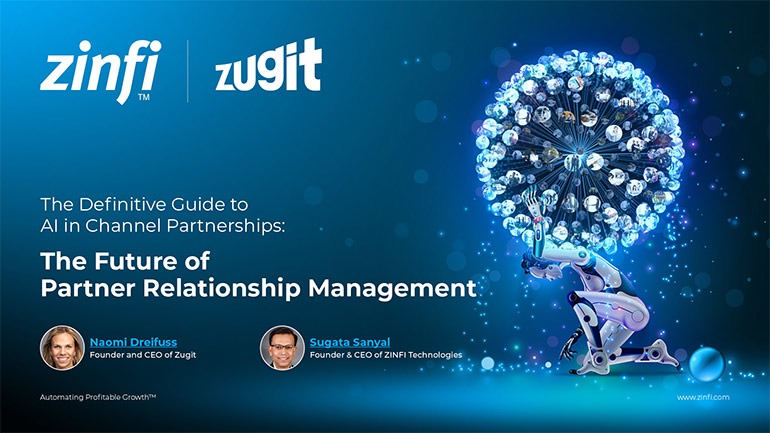Glossary - How to - Partner Management Software
How to Choose the Best Partner Management Software?
Introduction
Defining Partner Management Software and Its Importance
Partner management software is a comprehensive solution designed to help businesses streamline and optimize their partnerships with resellers, distributors, affiliates, and other channel partners. This software provides onboarding, training, marketing automation, performance tracking, and partner relationship management (PRM). Companies across industries rely on partner management software to ensure seamless collaboration, increase partner engagement, and drive revenue growth.
In today’s fast-paced digital economy, managing partnerships manually is inefficient and prone to errors. The best partner management software enables organizations to automate workflows, track partner performance in real-time, and enhance communication. This leads to more productive partnerships and maximized return on investment (ROI).
Relevance to Partner Management Automation
Partner management automation is critical in PRM for reducing administrative burdens, enhancing transparency, and ensuring efficient partner engagement. Automating tasks such as contract management, lead distribution, and incentive tracking allows companies to focus on strategic initiatives. Businesses leveraging the best partner management software benefit from improved collaboration, better alignment of goals, and higher partner retention rates.
Key Takeaways:
Features to Look for in the Best Partner Management Software:
Selecting the right software depends on the features that align with your business needs. Some essential features include:
- Partner onboarding and training tools – Automates welcoming new partners and providing necessary training.
- Lead and opportunity management – Enables businesses to distribute leads effectively and track conversion rates.
- Marketing automation – Helps partners execute co-branded campaigns and generate leads.
- Performance tracking and analytics – Provides real-time insights into partner activities and performance.
- Integration capabilities – Ensures seamless connectivity with CRM, ERP, and other enterprise systems.
Benefits of Implementing Partner Management Software:
Adopting a robust partner management system offers numerous advantages, including:
- Increased efficiency – Automation reduces manual tasks, allowing teams to focus on strategic goals.
- Enhanced partner engagement – Gamification, rewards, and certification programs help retain and motivate partners.
- Better data management – A centralized dashboard ensures real-time tracking of partner performance.
- Scalability – As your partner ecosystem grows, the software scales to accommodate new partnerships.
How to Evaluate and Compare Partner Management Software:
Businesses should consider the following factors to choose the best partner management software:
- Ease of use – An intuitive interface ensures higher adoption rates among partners.
- Customization – The ability to tailor the software to specific industry needs is crucial.
- Customer support – Reliable support services enhance the user experience.
- Pricing – The cost should align with the business budget while offering value for money.
Industry-Specific Considerations:
Different industries require unique functionalities from partner management software:
- Retail and e-commerce – Focus on affiliate management and commission tracking.
- Technology and IT services – Emphasize training, certification, and technical support.
- Manufacturing and distribution – Require strong inventory and supply chain integration.
Summary of Key Takeaways:
Several top-tier solutions dominate the partner management software market, including:
- ZINFI PRM Software – Offers comprehensive automation tools and seamless integrations.
- Impartner PRM – Known for its user-friendly interface and analytics.
- Channeltivity – Ideal for companies looking for flexible customization options.
- Zift Solutions – Provides robust marketing and sales enablement features.
Key Examples:
- Automotive Manufacturing: Automotive manufacturers collaborate with a vast network of dealers and distributors. Partner management software streamlines dealership onboarding, inventory tracking, and marketing support.
- Consumer Electronics: Consumer electronics brands rely on distributors and resellers. The best software helps track product promotions, sales performance, and marketing incentives efficiently.
- Energy Production: Energy companies work with contractors, suppliers, and affiliates. Partner management software assists in regulatory compliance, contract management, and performance evaluation.
- Financial Services: Banks and insurance firms partner with agents and brokers. Advanced PRM software ensures seamless onboarding, lead management, and commission tracking.
- Food and Beverage: Food manufacturers and distributors use partner management software to track orders, manage supply chains, and monitor sales performance.
- Healthcare Services: Healthcare organizations partner with medical suppliers and distributors. Partner management software enhances regulatory compliance, training, and sales tracking.
- Information Technology: IT firms rely on channel partners for software distribution and services. A PRM system ensures proper licensing, customer support, and revenue tracking.
- Pharmaceutical Development: Pharmaceutical companies work with distributors, healthcare providers, and researchers. Partner management software ensures compliance, research collaboration, and sales tracking.
- Retail Industry: Retailers depend on affiliate programs and suppliers. PRM tools help manage partnerships, commission payouts, and promotional campaigns.
- Telecommunications: Telecom companies work with resellers and service providers. Partner management software ensures smooth coordination, billing, and performance tracking.
Conclusion:
Choosing the best partner management software is essential for businesses seeking to enhance collaboration, streamline operations, and drive revenue growth. By evaluating features, benefits, and industry-specific considerations, companies can select a solution that aligns with their needs. Implementing the right PRM software leads to improved partner engagement, optimized workflows, and long-term success in managing partner relationships.
Associated Keywords:
- Partner Relationship Management Software
- Best PRM Tools
- Partner Management Platform Comparison















